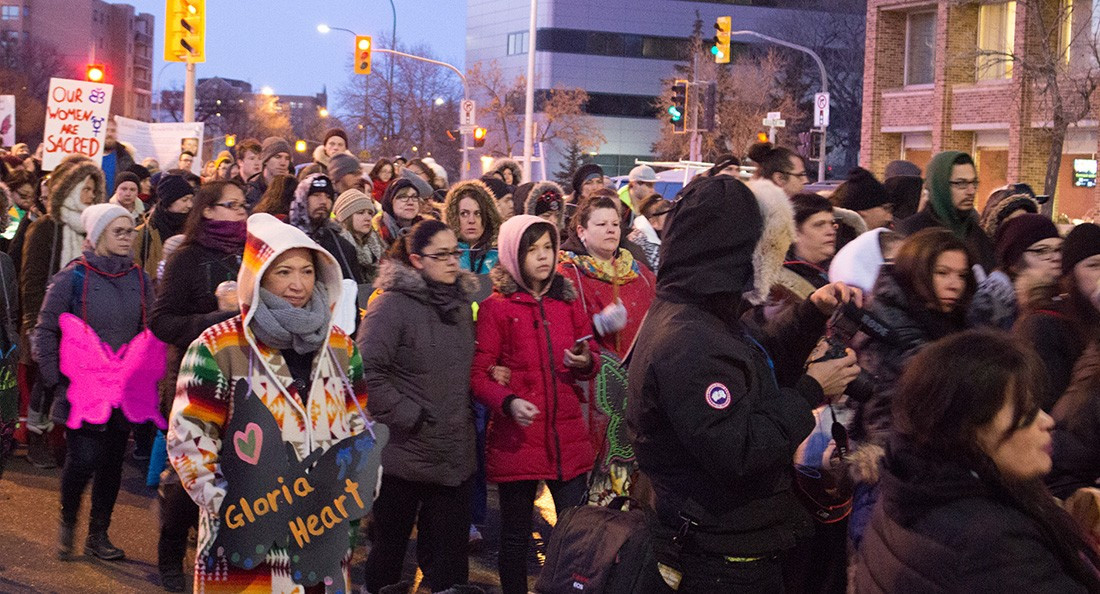March remembers missing and murdered Indigenous women
Dozens gathered to honour their lost friends and family
On Valentine’s Day, dozens of people marched around the University of Winnipeg (U of W) to remember missing and murdered Indigenous women (MMIW).
Most of them were wearing paper butterflies with the names of lost loved ones written on them.
Some were beating drums and singing. Others were holding up signs showing photos of the friends and family they lost. At the head of the march was a pickup truck with a drum circle sitting in the bed.
The members of the circle sang, and the crowd followed suit, while a man with a megaphone was shouting words of encouragement. The song’s verse would end with “And she will return, to show the way.”
Gladis and Shantel Malcolm were marching to remember the loved ones they lost. Gladis is Shantel’s aunt, and they carried a big sign saying “Remember them” along with photos of their family members they say were lost and forgotten by society and the police.
“I really don’t know about my mom. I was three when she passed away. My niece, she was happy. Family meant everything to her,” Shantel says.
“(My daughter) was my baby. I’ll always remember her. I’m still trying to deal with it,” Gladis says.
The Memorial March started in the ’90s out in Vancouver, honouring people who died as the result of violence. After, it started to spread across Canada and into the United States. About nine years ago, a woman named Lucy Michelle started a march in Winnipeg.
Cheyenne Chartrand is one of the organizers for the march. She says the people marching have started to become a community, supporting each other whenever they can.
“A lot of the people here I’ve seen year after year. A lot of the names become familiar. You meet the families attached to the name,” Chartrand says.
“When someone loses a loved one in a horrible way like that, they kind of know people who (they can) come to, who understand that grief, and they know of a way to honour somebody, so you can move through that grief.“
Chartrand says that the march has always been a memorial. It’s never really been a political statement or a protest. It’s always been a way to honour the people who were killed, and it’s open to all women from all nations.
The march ended with the unveiling of the We Care Quilt. It was made by Indigenous and non-Indigenous community members to take a stance against violence toward Indigenous women, girls and two-spirit people. It is currently displayed outside of The Hive in the U of W.
Gladis Malcolm just hopes that this march can continue and that this helps let the police know that people are dying.
“I hope this (march) continues. I hope everyone is aware. We need to let people know that this can’t happen again,” Gladis says.
Published in Volume 71, Number 21 of The Uniter (February 22, 2017)







